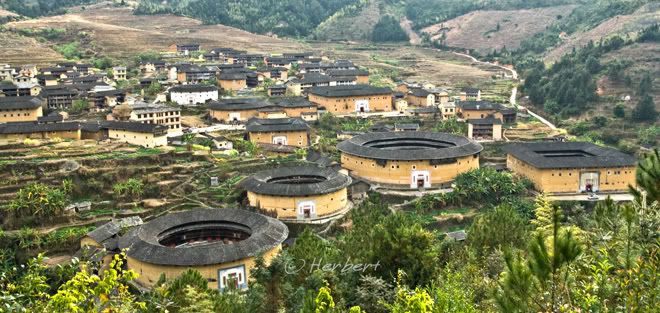
Location: Hakka Tulou, Yongding, Fujian, China (24�38'14.18"N 116�54'27.63"E)
Date: 11 December 2007, 3.20pm
Camera: Canon 400D with Sigma 17-70/f2.8-4.5
Hakka?? (in Cantonese) or Kejia (in Putonghua) is a subgroup of the Chinese Han. They are found mainly in the southern provinces of Guangdong, Fujian Jiangxi and Guangxi. Many of them still lives in traditional communal buildings known as Tulou??, literally meaning �earthen buildings�. Tulou�s come in various shapes and sizes but the most unique and well-known are the circular ones as seen in this photo. Tulou�s are mainly enclosed circular or rectangular, designed in such a way mainly as a defensive construction. There are still quite a few tulou�s in these parts of China but their number is dwindling due to neglect and residents choosing to stay in modern concrete buildings. A good article on the tulou can be found here.
The Fujian Tulou had just been inscribed as a UNESCO Heritage Site this month (China has the third largest number of UNESCO Sites at 37 after Italy, 43 and Spain, 40). It is hoped that such a recognition will ensure that they will be properly maintained, now with access to international protection and funds. However I cannot be optimistic looking at the record of tourism developments in China over the last few years. Whenever a destination became a UNESCO Site, it attracts hordes of Chinese tourists despite local authorities invariably jacking up the prices of visiting such destinations when they became a UNESCO Site, adding immense pressure to the site maintenance. Moreover, local authorities had in many occasions forcibly expelled residents in and around such sites in the name of preservation; in the process uprooting traditions and culture related to a site that dates back centuries- ironically these are itself part of the reasons why a site was listed as the UNESCO site in the first place.